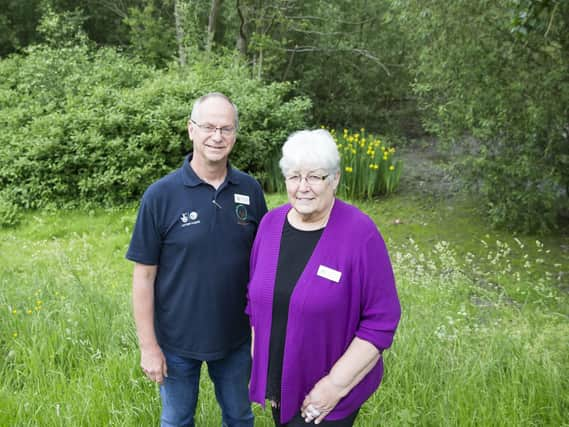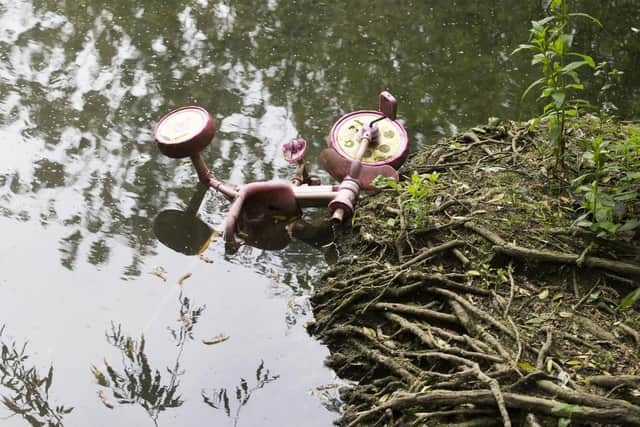Mission to restore three Northampton lakes to their former glory after oil pollution


This is the view of the chairman of Brookside Residents’ Association Dianne Finnie, who remembers what Billing Brook Lakes used to be like in its glory days.“People walked around with their dogs, and their children on their bikes. “It was a nice place to walk around. It was peaceful.”In recent years people in the eastern side of Northampton have watched water levels drop and pollution rise at the three Billing Brook lakes in Lings, Lumbertubs and Thorplands.The lakes, which were once a place known for their picturesque scenery, are now strewn with old bicycles and litter.But there is hope for the future.Lottery-funded organisation Growing Together Northampton has submitted a planning application to the Guildhall to save the former beauty spot.Together with the Environment Agency, they are hoping to dredge silt out of the lakes and use it to create new wetland habitats, reed beds and islands.
This will make the lakes deeper and narrower and, in turn, will speed up flow in the trio of lakes and reduce loss to evaporation.Peter Strachan, Big Local programme co-ordinator, said: “Coming up to 2015, there was a very bad pollution incident which lost a lot of the wildlife in particular on the middle lake, but it affected the wildlife on all of the lakes.”This caused great concern with councillors, residents and Growing Together Northampton, forcing them to take action.“Basically what we did at first, we asked the question: ‘why is this happening’? “We discovered that the pollution probably wasn’t any worse but it was the fact the lakes were flowing much more slowly, and therefore it hung around a great deal longer and caused a lot more damage.”This has had a devastating effect on the local wildlife. In 2015, four cygnets died due to oil pollution. A report commissioned later that year by civil engineer Jim Milne found fuel oil, engine oil, transmission oil and brake fluid were all being dropped accidentally by lorries parked by the side of the road. The fluids were then being washed into a set of storm drains, polluting the lakes.By dredging the lakes, Peter hopes wildlife will increase. He said: “You’ll have better-oxygenated water, cooler water and faster flowing water. That should increase the insect life, increase the fish life and that’s your food chain for the birds and the larger animals. “Gradually we should bring a lot of the biodiversity back.”With the help from environmental services contractor Idverde, the partnership will also arrange for the overgrowth around the lakes to be cut back to make it a safer environment for pedestrians in the dark.He added: “There are places you can walk around the lake... and you simply wouldn’t know there was a lake there because the overgrowth is so great. There are large areas where you are walking around the lakes where you can’t be seen very clearly and on winter evenings is doesn’t feel very safe. “By cutting that back it will open up the lines of sight and people should feel a lot safer walking around.”Other organisations in the partnership include Northampton Borough Council, Northamptonshire County Council, the Wildlife Trust, Brookside Residents Council, David Wilson Homes, the developer of the new Overstone Leys estates, and Anglian Water.So far the partnership has raised more than £75,000 – and a possible six-figure contribution from a “major funder” is also expected soon.Work is expected to start in early September, after the end of nesting season, and should take about three months. And next year the overgrowth around Kingfisher, Cygnet and Dragonfly lakes will be dramatically cut back.
Billing Brook Lakes: A brief history


Advertisement
Hide AdAdvertisement
Hide AdBilling Brook is a tributary of the River Nene, which passes through the east of Northampton.
In the early 19th century it formed a small meandering stream in an area which consisted predominantly of agricultural fields, but in the late 19th century it was placed into a straightened channel.
When the new town was created in the late 1960s and 1970s, a series of three lakes were formed along a section of this small straightened stream.
The lakes were created by installing a series of large weirs and earthworks to form the current Kingfisher, Cygnet and Dragonfly lakes.